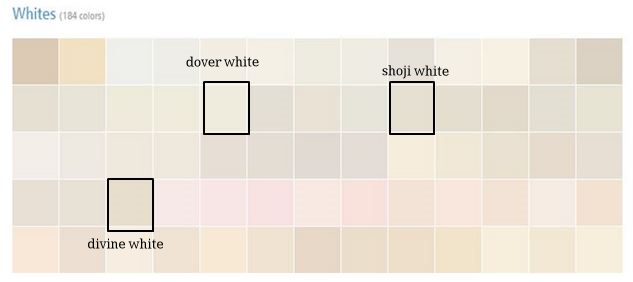4 Steps For Picking The Perfect Paint
If you saw last week’s post, you’ll remember some of the rooms in the new house were painted some pretty bold colors—a yellow dining room and a red and green kitchen. While I won’t knock bold moves in home décor, I wanted neutral colors to leave the interior design open ended. I picked up some tips and tricks along the way and am really happy with how the house turned out. Sharing here four steps I used for picking the paint colors for your home. Check back later this week to see painting updates.
Step #1 - Find your inspiration
Before you paint you'll want to have an idea of what you want the space to look like once it’s done—looking at what interiors you pin or save on Instagram the most will help. When in doubt stick to neutral, you can always repaint a room if you decide to go bold.
Step #2 - Match undertones In Floors And Wall Paint
After finding your inspiration, you can narrow down your top contenders by using the floor undertones as a guide. The undertones in the floors are a great place to start. You'll need to know if your floors have warm or cool undertones and then you can match the warmth in your floors to your inspiration's. The undertones of hardwood floors are so much easier to tell than paint. See what I mean?
Warm (left)—COOL (Middle) — NEUTRAL (Both on Far Right)
The floors in this house were warm, so I looked for paint that was shown in rooms with warm wood tones as well. This brought me to my standout paint color, Shoji White and helped me make a decision on three grays that caught my eye. I ruled out Aloof Gray because it was pictured with cool undertones and leaned towards Worldly Gray and Accessible Beige to sample.
Aloof Gray
Worldly Gray
Accessible Beige
You'll also want to match the undertone of the paint swatch with the undertone of the wood. If you're looking at white paint a great tip for finding its undertone is to look at the swatches online - the undertones are really clear here. Following steps 1-2, I narrowed my choices down to Shoji White, Dover White and Divine White, World Gray and Popular Gray.
Step #3 - Pick a sheen that fits your family's lifestyle
Choose your sheen/finish taking into account the purpose of the room and the level of wear and tear you can expect. Here's a quick guide starting with the most sheen and highest durability to no sheen and low durability.
High Gloss: Most durable and easiest to clean, but shows imperfections. Recommended Places - Kitchen, Doors, Trims
Semi-Gloss: High durability and good for rooms with moisture. Easy to clean. Recommended Places - Kitchens, Bathrooms, Doors, Trims
Satin: Soft sheen with medium durability. Recommended Places - Family Rooms, Hallways, Foyers, Kid's Rooms
Eggshell: Low-sheen. A good go-to for most rooms. Covers wall imperfections. Recommended Places - Dining Rooms, Living Rooms, Bedrooms
Flat or Matte: Hides flaws best, but needs to be cleaned carefully to not remove paint. Recommended Places - Bedrooms, Living Rooms, Dining Rooms, Ceilings
Step #4: Paint Samples On Your Walls
Once you've narrowed it down to a handful of colors, it's time to paint samples on the wall. A great tip to save money on brand name samples is to get a home improvement store like Home Depot or Lowes to mix the color for you. All they need is the color number like SW6071.
Paint the samples on the wall so you can test that color in the actual room with the lighting. This part of the stage I changed my mind on some of the colors I was set on for certain rooms because they either looked too light or too dark in the room.
Check back later this week to see what colors I picked for the house!





